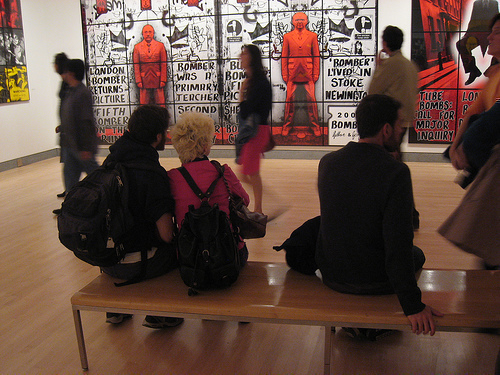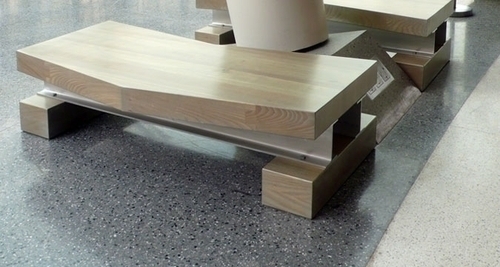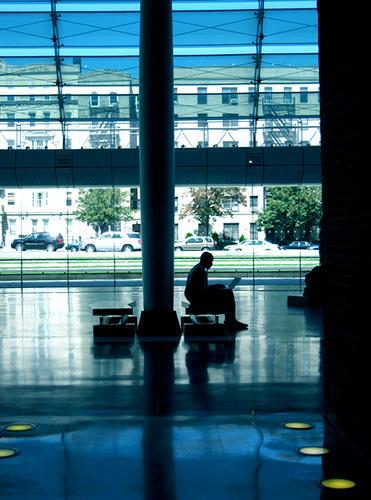Please sit down

You’ve been walking around a museum for several hours looking at hundreds of artworks, and want to take a break and sit for a minute. . . . whether to chat with a friend, rest your feet, or to spend a few minutes gazing at a particularly interesting artwork . . . but, alas, can’t find a seat. And so you walk some more, ask a guard, and you might find the odd chair or bench. At the Brooklyn Museum, we have been especially sensitive to this situation, as there are over 250,000 square feet of exhibition space to walk through. Over the years, as we’ve developed new permanent and temporary exhibitions, as well as public spaces, we have included seating as an important element in the design plan.
There can be many different approaches to Museum seating. In our American Identities galleries, we created four seating islands, which consist of a carpeted area with chairs and reading tables. In our new contemporary galleries, we have incorporated commercial furniture: Kartell’s “Plastics” line of modular seating. And at other times we have created custom seating, such as the benches in our Egypt Reborn galleries, which have Egyptian revival stylings.

Our most recent response to the public’s need for seating, can be found in the Museum’s first floor Rubin Pavilion. After a lengthy process of experimentation, I arrived at a design that blended both geometrically and materially with the Polshek designed lobby, which had opened in 2004. Using solid white ash, clear stain infused with aluminum powder, and textured and waxed aluminum i-beams, the benches were expertly built and finished by the Museum’s carpentry and paint departments.
Photo by Naoko’s Stoop via Flickr. All Rights Reserved.
Like a lot of custom furniture, these benches are built to last, very durable and will be enjoyed by Museum visitors for many, many years.

Matthew Yokobosky came to the Brooklyn Museum as an exhibition designer in 1999, and was appointed Chief Designer in 2002. He earned a B.A. in film studies and design from the University of Pittsburgh in 1986, and, one year later, moved to New York to work at the Whitney Museum of American Art. While at the Whitney, Yokobosky held many positions, including exhibition designer (1995 Biennial, The American Century (1999)) and associate curator of film and video (No Wave Cinema, 1996; Fashion & Film, 1997). During the same period, he designed theater productions (Ping Chong's 1989 show Brightness, which won a Bessie award for set and costume design) and books (Yoko Ono: Arias and Objects, 1991). For the Brooklyn Museum, he has designed the critically acclaimed Luce Center for American Art (2002/2005, permanent installations), as well as over 30 temporary exhibitions including Hiroshige: 100 Famous Views of Edo (2000), Basquiat (2005), Annie Leibovitz (2006-7), and I Wanna Be Loved by You: Photographs of Marilyn Monroe (2004), which he also curated.

